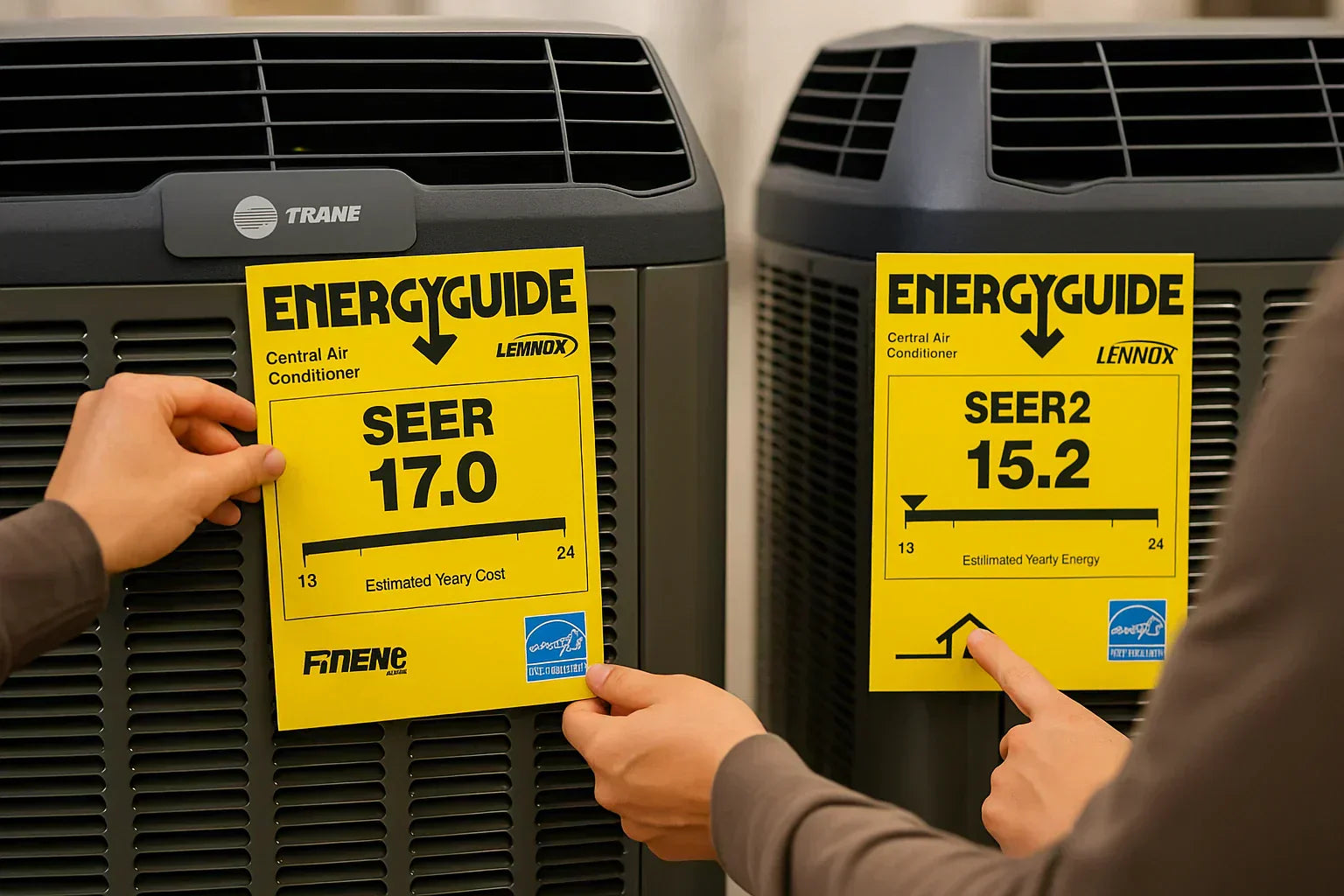By Alex Lane | Your Home Comfort Advocate
If you're in the market for a central air conditioner this year, you're shopping at the perfect time — but also at a time when the landscape is changing fast. Between new federal efficiency rules, smarter technologies, and expanded rebate programs, there’s more to consider than ever before.
So what should you really look for in a 2025 central AC system? In this guide, I’ll walk you through the must-have features, efficiency benchmarks, and insider tips to help you avoid common pitfalls — and find a system that keeps your home cool without breaking the bank.
Looking to compare specific models head-to-head? 👉 Top 10 Central AC Units Compared (2025 Edition)
Why 2025 Is a Big Year for Central AC Buyers
Between rising energy costs and federal policy shifts, 2025 marks a new era for cooling systems.
📏 Updated Efficiency Standards (SEER2)
As of 2023, all newly installed residential central air conditioners must meet updated SEER2 efficiency ratings — a more realistic version of the original SEER measurement. What does that mean for you?
-
Northern U.S.: Minimum of 13.4 SEER2
-
Southern U.S.: Minimum of 14.3 SEER2
If your system is more than 10 years old, odds are it doesn’t come close to these ratings. Upgrading could cut your energy use significantly — especially with today’s smarter, variable-speed systems.
What Should You Look for in a Central AC System?
Let’s break down the key specs and features that actually matter when shopping for central AC in 2025:
1. SEER2 Rating
The Seasonal Energy Efficiency Ratio 2 (SEER2) measures how much cooling a unit delivers for each watt of electricity. The higher the SEER2, the more energy-efficient your system is.
According to the ENERGY STAR central AC directory, top-tier units can hit 20–28 SEER2 — which may slash your cooling bills by up to 40% compared to older models.
Look for:
-
SEER2 ≥15 for most climates
-
ENERGY STAR certification for rebate eligibility
-
AHRI-certified systems for third-party verification
2. Correct Sizing and Load Calculation
An oversized unit will short-cycle, wasting energy and wearing out faster. An undersized unit will struggle to keep you comfortable.
A Manual J load calculation — performed by your HVAC installer — ensures your system is tailored to your home’s square footage, insulation, sun exposure, and layout.
Need help understanding sizing? 👉 How to Size a Central AC Unit for Maximum Comfort
3. Compressor Type
Central AC systems come in three compressor configurations:
Single-stage:
-
Least expensive upfront
-
On/off cycling only
-
Less efficient in variable weather
Two-stage:
-
Moderate efficiency
-
Runs longer at low speed
-
Better humidity control
Variable-speed:
-
Adjusts output continuously
-
Ultra-efficient and quiet
-
Ideal for hot or humid regions
If your budget allows, a variable-speed compressor paired with a high-SEER2 rating is often the best long-term value.
4. Noise Level (Decibels)
Air conditioners vary widely in noise output. Entry-level models can run above 72 dB — about as loud as a vacuum cleaner — while premium units with insulated cabinets operate closer to 50–55 dB.
💡 Check manufacturer specs and reviews for real-world sound performance before you buy.
5. Smart Thermostat Compatibility
Modern AC units often integrate with Wi-Fi-enabled thermostats like Ecobee, Nest, or brand-specific models. These can:
-
Learn your schedule
-
Detect when you're home or away
-
Send maintenance alerts
-
Reduce energy use automatically
Check whether your system supports these integrations — and whether the thermostat is included or sold separately.
6. Warranty and Brand Support
The warranty is your safety net. Look for:
-
10-year limited parts warranty (industry standard)
-
Lifetime compressor warranty (offered by brands like Amana)
-
Registered warranties (some require online activation within 60–90 days)
Also consider installer and dealer support in your area — because even the best system won’t run properly without expert installation.
Cost Factors to Keep in Mind
Installing a central AC system is a big-ticket project, and costs vary by region, size, and complexity. But efficiency can make or break your long-term budget.
According to EnergySage, the average central AC uses 3,000 to 5,000 watts per hour. The more efficient your unit, the less electricity it pulls to cool your space — saving hundreds per year.
Don’t forget:
-
Installation quality affects performance.
-
Proper ductwork is essential for airflow and efficiency.
-
Permits and inspections may add to your final quote.
2025 Incentives: What You Might Be Leaving on the Table
If you choose a SEER2-compliant system, you could qualify for major rebates and tax credits:
Federal Tax Credit (Inflation Reduction Act)
Claim up to $2,000 on your federal tax return for installing a high-efficiency HVAC system that meets program criteria. Full details at the IRS site.
Utility and State Rebates
Find rebates in your area using the DSIRE database — some offer $300–$1,200 just for upgrading your system.
Manufacturer Rebates
Top brands like Lennox, Carrier, and Rheem offer seasonal promotions up to $1,500.
👉 Ask your installer for:
-
An AHRI Certificate
-
A copy of the EnergyGuide label
-
A breakdown of which rebates you're eligible for
Red Flags to Watch For
❌ Systems without AHRI certification
❌ Overly cheap bids from unlicensed installers
❌ “Too big for your house” recommendations
❌ Contractors who don’t pull permits or run load calculations
❌ Outdated SEER (pre-2023) inventory
Final Thoughts from Alex Lane
Buying a central AC unit in 2025 isn’t just about comfort — it’s about making a smart investment in your home’s energy future.
Focus on SEER2 efficiency, proper sizing, and trusted brands. Be wary of shortcuts. And don’t leave rebate money on the table.
When in doubt, get a second quote, ask for documentation, and compare apples to apples.
Alex Lane
Your Home Comfort Advocate







